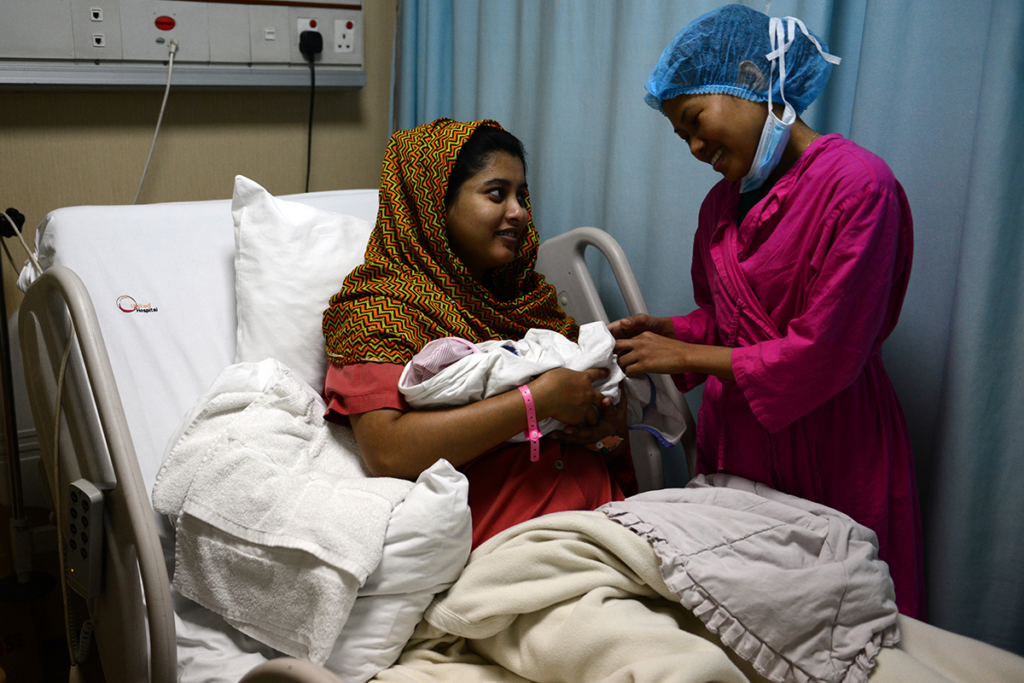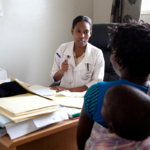A primary indicator that tracked progress toward reducing maternal mortality prior to the Sustainable Development Goals (SDGs) was the percentage of women delivering with a skilled birth attendant. The assumption was that skilled attendants would ensure women receive quality, evidence-based services. It is true that more women are delivering with skilled attendants now than in 1990, and that more deliveries are taking place in health care facilities; it is also true that ratios of maternal mortality have decreased. Yet, the relationship between increased facility deliveries and reduced mortality within countries is mixed. Why is that? One explanation could be that a quality gap remains.
To understand this better, we need to move away from relying on one-dimensional indicators of coverage and use toward indicators that more adequately capture the complexity of facility capability and quality. This will help the maternal health community better track changes at health facilities and support national and subnational entities to identify and target needed interventions. Together with Oona Campbell of the London School of Hygiene and Tropical Medicine (LSHTM) and colleagues, our team analyzed data from 50 countries in an article in The Lancet Maternal Health Series to characterize the availability of critical infrastructure and services where women deliver. Here I present some of those findings that are also included in my lecture that is part of a free online Maternal Health Series course developed by LSHTM.
Key indicators highlighting the variation of capability across countries can be broken down into five broad categories: basic infrastructure, routine delivery services, emergency obstetric services, timeliness of care, and time in a facility. The new Maternal Health Series lecture largely highlights data from four countries – China, Ghana, Mozambique and Rwanda. Countries have various levels of capability; these more complex indicators are helpful in characterizing that variation across countries, and could also be used to understand differences within countries by region, facility type and sector. The four countries included in this blog exemplify important differences in terms of level of health facility capability to provide delivery services.
Basic infrastructure
Results of a systematic review show that 66% of hospitals in sub-Saharan African countries lack electricity; another study finds that 38% of facilities lack improved water, 19% lack improved sanitation, and 35% lack water and soap for handwashing. In our article, we look at the presence of three elements of basic infrastructure relative to where women are delivering – water, electricity, and the 24/7 availability of services. Figure 1 indicates that many deliveries take place in facilities that are open at all times, but lack either water or reliable electricity.
The vast majority of deliveries in Ghana in 2010 occur in facilities with all three elements in place (shown in green). By contrast, in Rwanda in 2007, just one-quarter of deliveries occur in facilities with all three elements. Mozambique is between the two, with about three-quarters of deliveries occurring in facilities with all three infrastructure items.
Note that this chart, and others below, presents the distribution of deliveries according to the capability of facilities where the delivery occurred. This presentation offers important context around the exposure of women and newborns to poor (or strong) facility capability. However, from a planning perspective, countries would also want to understand the proportion – and geographic location – of facilities with important capability gaps to target improvements.
Routine delivery services
In Ghana in 2010, just over 13% of deliveries occur in facilities missing at least one routine signal function. In Rwanda in 2007, that proportion is three-quarters of deliveries, and in Mozambique in 2012 about one-third. These three seemingly simple services should be available to every woman who delivers. Yet, many women deliver in facilities where these services are missing, increasing their chance of dying from sepsis, hemorrhage, and obstructed labor.
Emergency obstetric services
A facility provides comprehensive EmOC if it has recently provided nine signal functions. Basic EmOC indicates a basic level of complication management that should be available at most mid- to low-level facilities; we refer to the tiered levels of basic EmOC as fully basic (7 signal functions), approaching basic (5 or 6 signal functions), limited functioning (2 to 4 signal functions), and substandard (0-1 signal functions) in Figure 3.
Note that many countries have essentially abandoned the practice of assisted vaginal delivery – i.e., delivery with forceps or vacuum extraction – thus, basic EmOC services are sometimes measured by excluding that life-saving intervention. The fully basic category includes basic services without assisted vaginal delivery.
Figure 3 shows that facilities’ capability to provide EmOC varies, and is often poor. In Rwanda in 2007, 36% of deliveries occur in facilities that provide zero or one basic signal function, as indicated in red. In Ghana in 2010, this proportion is 3%. Women in China in 2011 are considerably more likely to deliver in facilities providing full EmOC services than those in sub-Saharan Africa.
Timeliness of care
Time in facility
In conclusion, there are multiple country data sources with which to characterize features of facilities including: their delivery volume, whether they have adequate infrastructure, their capability to provide routine and emergency care, and how long women stay after delivery. We also know facilities’ capability to provide timely care to individual women is key, but unfortunately such data are not routinely tracked.
The indicators described above are better suited for capturing the complexity of facility capability. Using these indicators – together with indicators of coverage and use – will better position the global community to track changes and will support health planners in-country to identify and target interventions to further reduce maternal mortality.
Stay tuned for a later blog post highlighting our in-depth dive into the status of water, sanitation and hygiene services in health facilities in Ghana and Togo!
Photo caption: A new mother holds her infant as she speaks with a health provider at a hospital in Dhaka, Bangladesh
Photo credit: © 2014 Md. Khalid Rayhan Shawon, Courtesy of Photoshare






